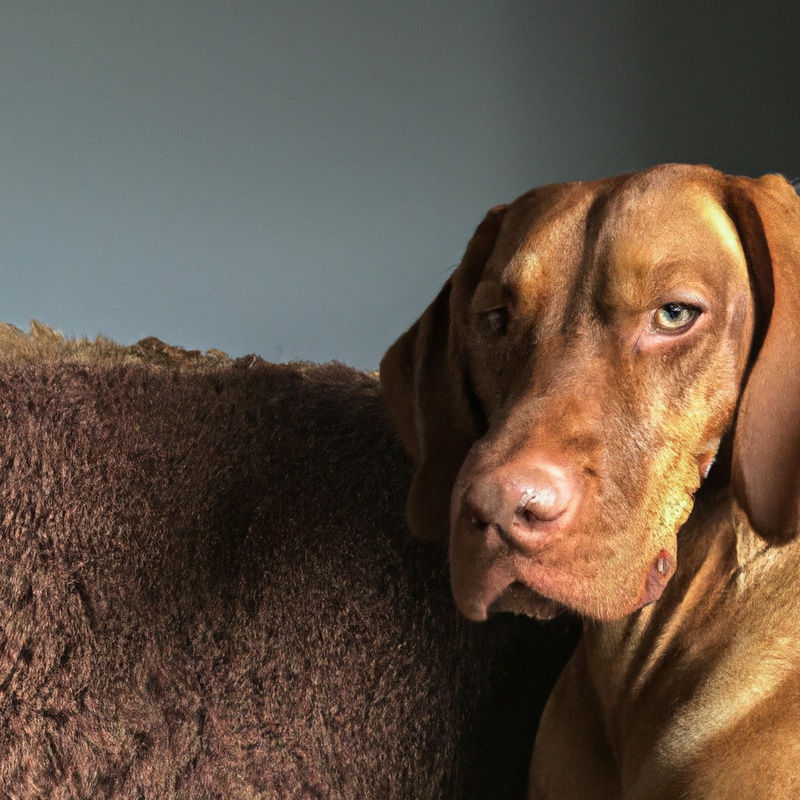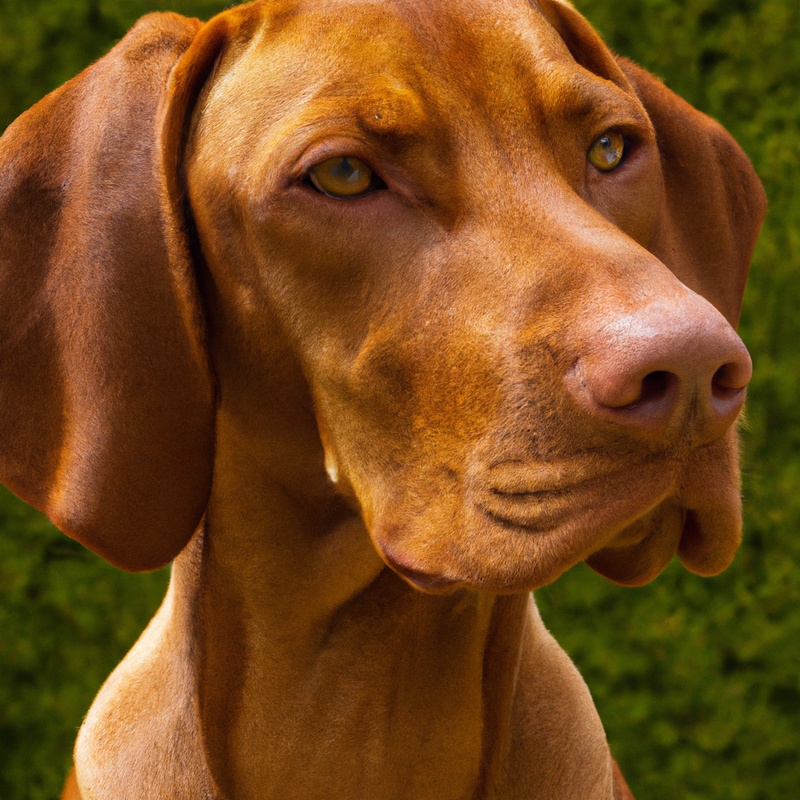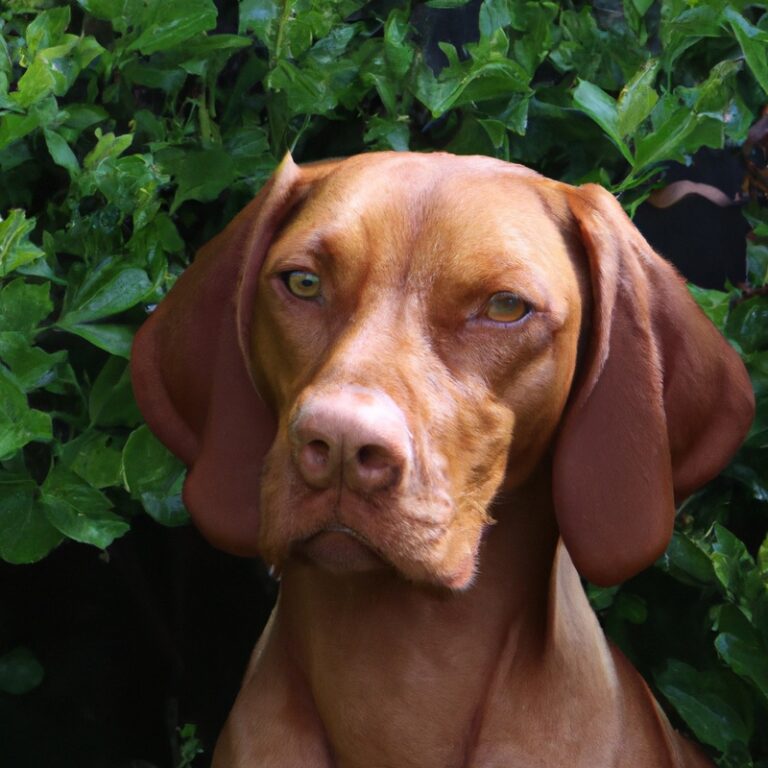What Are Some Potential Allergy Triggers For Vizslas?
Key Takeaways:
- Certain food ingredients can be potential allergy triggers for Vizslas.
- Environmental factors like pollen and dust mites can also cause allergies in Vizslas.
- Vizslas may develop allergies to certain medications or grooming products.
- Frequent exposure to fleas or ticks can lead to allergic reactions in Vizslas.
Are you a proud Vizsla owner? Or perhaps you’re considering bringing home one of these elegant, energetic pups?
Either way, it’s important to be informed about potential allergy triggers that can affect your beloved four-legged friend.
Just like humans, Vizslas can experience allergies that cause discomfort and distress. From environmental allergens to food sensitivities, this blog will explore the common culprits behind Vizsla allergies.
As an expert in the field, I will provide insights on how to identify and manage these triggers, so you can keep your Vizsla happy, healthy, and allergy-free!
| Allergy Triggers | Description |
|---|---|
| Pollen | Allergens found in plants, trees, weeds, and grasses |
| Dust mites | Microscopic mites found in dust and household environments |
| Mold | Fungal spores present in damp areas or decaying organic matter |
| Food | Ingredients such as wheat, soy, dairy, or specific proteins |
| Insects | Bites from fleas, ticks, mosquitoes, or other pests |
| Chemicals | Substances like cleaning products, perfumes, or certain fabrics |
Common Allergy Triggers for Vizslas
Environmental Allergens
Environmental allergens are potential triggers for allergies in Vizslas. These may include pollen from grasses, trees, and weeds, as well as mold spores.
Dust mites found in bedding and carpets can also cause allergic reactions.
Additionally, chemicals in cleaning products or air fresheners may irritate their sensitive respiratory systems. Pawing at the face or eyes, excessive itching, sneezing, and coughing are signs that your Vizsla could be experiencing an allergic reaction to environmental allergens.
Regular cleaning, keeping indoor air clean, and avoiding exposure to known allergens can help minimize their discomfort.

Food Allergies
Food allergies can be a common issue for Vizslas.
Here are some potential allergens to watch out for:
- Grains: Wheat, corn, and soy are often found in commercial dog foods and can trigger allergies in some Vizslas.
- Protein sources: Beef, chicken, and dairy products are also common allergens in dogs, including Vizslas.
- Artificial additives: Preservatives, colorings, and flavorings can cause allergic reactions in some dogs.
It’s important to pay attention to your Vizsla’s diet and monitor for any signs of food allergies.
Switching to a hypoallergenic or limited ingredient diet may be necessary in some cases.
Consulting with a veterinarian is always a good idea to properly diagnose and manage food allergies in your Vizsla.
Flea Allergy Dermatitis
Flea Allergy Dermatitis is a condition in which Vizslas have an allergic reaction to flea bites. Even a single flea bite can cause intense itching and discomfort for your furry friend.
The allergic reaction occurs due to the flea saliva.
Symptoms of flea allergy dermatitis include excessive scratching, redness, hair loss, and skin infections. It is important to treat and prevent fleas to alleviate your Vizsla’s discomfort.
Regular flea prevention, such as topical treatments or oral medications, is crucial.
Additionally, frequent grooming and vacuuming your home can help reduce the flea population.
Contact Allergies
Contact allergies occur when a Vizsla comes into direct contact with a substance that triggers an allergic reaction. Common contact allergens include certain cleaning products, fabrics, plants, and even some grooming products.
Some signs of contact allergies in Vizslas include redness, itching, and irritation in the affected area.
To manage contact allergies, it’s important to identify and avoid the specific allergens that are causing the reaction. Regular bathing with hypoallergenic shampoos can also help reduce the chances of a contact allergic reaction.
How to Identify Allergy Triggers in Vizslas
Observing Symptoms
When it comes to observing symptoms of allergies in Vizslas, it’s important to pay close attention to their behavior and physical well-being.
Look out for signs such as excessive itching, red and inflamed skin, hair loss, watery eyes, sneezing, coughing, and gastrointestinal issues.
Notice if these symptoms occur consistently or after exposure to certain environments, foods, or substances.
Keep a record of the triggers and consult with a veterinarian for a proper diagnosis and treatment plan.
Regular observation is key to identifying and managing your Vizsla’s allergy triggers.
Conducting Allergy Tests
Conducting allergy tests for your Vizsla can help identify potential triggers.
One common test is a blood test, where a sample is taken and analyzed for specific allergen antibodies.
Another option is a skin prick test, involving small injections of allergens on the skin to observe any reactions.
These tests can be performed by a veterinarian and are crucial in determining what substances may be causing your dog’s allergies.
Remember to consult with a professional for accurate results.
Elimination Diet
Elimination diet can be a useful tool in identifying potential allergy triggers in Vizslas. The process involves removing certain foods from your dog’s diet for a period of time and then reintroducing them one by one to see if any adverse reactions occur.
This method helps in pinpointing specific ingredients that may be causing allergic reactions in your Vizsla.
It is important to work closely with your vet to ensure the diet is nutritionally balanced and to determine the appropriate duration for this process.
Managing Allergies in Vizslas
Avoiding Allergy Triggers
To avoid allergy triggers for your Vizsla, it’s important to be aware of common culprits.
Keep their environment clean by regularly washing bedding and vacuuming.
Avoid using harsh cleaning products that can irritate their sensitive skin.
Limit their exposure to outdoor allergens by keeping them indoors during high pollen days.
Be mindful of the ingredients in their food and switch to hypoallergenic options if needed.
Regular grooming and bathing can also help remove allergens from their coat.
Medications and Treatments
Medications and treatments for allergies in Vizslas vary depending on the severity of the symptoms. Common options include antihistamines, corticosteroids, and immunotherapy.
Antihistamines help relieve itching and sneezing, while corticosteroids reduce inflammation.
Immunotherapy involves gradually exposing your Vizsla to small amounts of the allergen to desensitize them. Always consult with your veterinarian to determine the best course of action for your pup.
Some natural remedies like oatmeal baths and coconut oil can also provide relief for mild allergies.

Allergy-Friendly Diet
An allergy-friendly diet can help manage your Vizsla’s allergies.
Be mindful of potential triggers like grains, dairy, and artificial additives.
Opt for hypoallergenic dog food that is free from common allergens.
Consider novel protein sources like kangaroo or venison.
Incorporate fresh fruits and vegetables for added nutrients.
Consult with your veterinarian for personalized dietary recommendations.
Regularly monitor your Vizsla’s reactions to different foods to identify any new allergies.
Frequently Asked Questions (FAQs)
Can Vizslas Develop Allergies Over Time?
Yes, Vizslas can develop allergies over time.
Just like humans, dogs can develop allergies as they get older.
Common allergens for Vizslas can include certain foods, environmental factors like pollen or dust mites, and even fleas.
Allergies can cause a range of symptoms in Vizslas, including itching, redness, sneezing, and gastrointestinal issues.
If you notice any signs of allergies in your Vizsla, it’s best to consult with a veterinarian for proper diagnosis and treatment.

Are Allergy Symptoms in Vizslas Similar to Humans?
Allergy symptoms in Vizslas can be similar to those in humans.
They may experience itching, sneezing, and redness or inflammation of the skin.
Vizslas can also have respiratory symptoms like coughing or wheezing.
It’s important to consult with a veterinarian to properly diagnose and treat allergies in your Vizsla.
Regular grooming, a healthy diet, and minimizing exposure to potential allergens can help alleviate symptoms.
Can Allergies in Vizslas Be Cured?
Allergies in Vizslas cannot be completely cured, but they can be managed.
The goal is to reduce symptoms and improve the dog’s quality of life.
Treatments may include dietary changes, medication, allergy shots, and regular grooming.
It is important to work closely with a veterinarian to develop a customized treatment plan for your Vizsla.
Final Verdict
As an expert on Vizslas and allergies triggers, I have discussed the common allergy triggers for Vizslas, including environmental allergens, food allergies, flea allergy dermatitis, and contact allergies.
I have also provided insights on how to identify these allergy triggers through observing symptoms, conducting allergy tests, and implementing an elimination diet.
Additionally, I have explored various methods for managing allergies in Vizslas, such as avoiding triggers, using medications and treatments, and implementing an allergy-friendly diet.
Overall, understanding and managing allergies in Vizslas is crucial for their well-being and quality of life.






